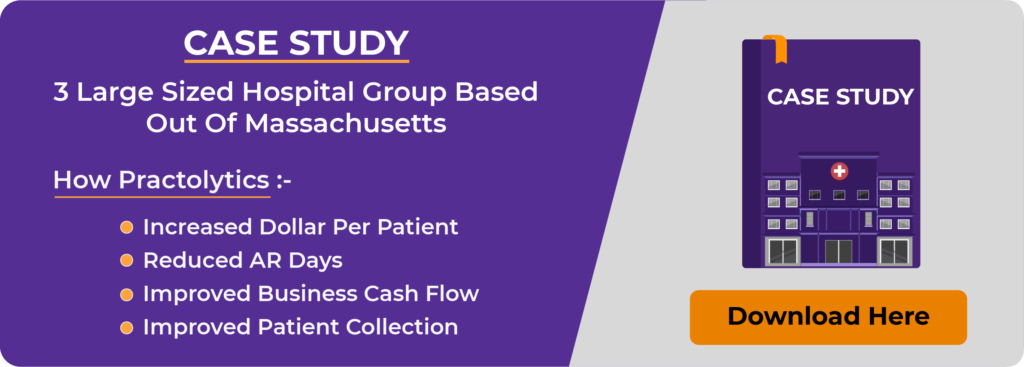Top 5 Global Medical Billing Trends to Expect in 2023
The medical billing sector is rapidly evolving to accommodate the changing demands of both patients and healthcare professionals. Several trends will change how medical billing systems operate in 2023. These trends are going to have a huge influence on the effectiveness and accuracy of medical billing operations, as well as the quality of patient care.
As we have entered 2023, it’s time to look over some of the top 5 global medical billing trends to expect in 2023which will transform the healthcare industry. Knowing and understanding these current trends will assist you in determining where your practice lags behind and implementing them for increased revenue this year.
Table of Contents
1. Autonomous Coding
Autonomous coding in medical billing refers to the use of Artificial Intelligence (AI) and Machine Learning (ML) algorithms to automate the coding process in healthcare billing. The goal of this technology is to increase the efficiency and accuracy of coding, reduce the risk of errors, and save time for medical billing professionals.
The process of autonomous coding works by using algorithms to analyze and categorize medical information contained in Electronic Health Records (EHRs) and other medical documents. The algorithms are developed on large datasets of medical codes, which helps them to identify patterns and relationships between different codes and medical conditions. This information is then used to automatically assign the appropriate codes to medical procedures and services, reducing the need for manual coding.
Overall, autonomous coding has the potential to greatly improve the efficiency and accuracy of medical billing in 2023.
2. Improve Patient Experience
Medical billing can be a complex and confusing process for patients, and a negative experience with billing can impact their overall satisfaction with their healthcare provider. Improving the patient experience in medical billing is important in establishing trust and sustaining strong relationships with patients.
Improving the patient experience in medical billing involves making the entire process as transparent, streamlined and stress-free as feasible. This can be achieved by providing clear and concise billing statements, offering flexible payment options, improving communication and education, and implementing efficient and user-friendly billing systems.
By taking steps to improve the patient experience in medical billing, healthcare providers can help to reduce confusion and frustration, increase trust and satisfaction, and build long-lasting relationships with their patients. This can potentially lead to a more favorable healthcare experience for patients and improved outcomes in 2023.
By leveraging new technologies like Electronic Health Records (EHRs), Online Billing and Payment Platforms, Mobile Health Applications, Artificial Intelligence (AI) and Machine Learning (ML) and more, healthcare providers can improve the patient experience in medical billing by reducing wait times, improving transparency, increasing convenience, and reducing the risk of errors.
3. Cybersecurity Compliance
The need for cybersecurity compliance in medical billing is driven by the sensitive and personal nature of the information that is processed and stored in medical billing systems. This dataset includes patients’ health records, their SSN- Social Security Number, payment details, and other confidential info.
If this info ends up in the wrong hands, it might be exploited for negative reasons such as data breaches, fraud, or blackmail. This could have devastating consequences for patients, resulting in huge financial losses and damaged reputations.
In addition, a security breach in a medical billing system could result in significant legal and regulatory consequences for healthcare providers, including fines and loss of reputation.
To protect patient information and avoid these consequences, it is essential that healthcare providers comply with relevant cybersecurity regulations and implement best practices for protecting sensitive information in medical billing systems. This helps to reduce the risk of security breaches, ensure the confidentiality and security of patient information, and maintain trust and confidence in the healthcare system.
The increasing threat of cyberattacks and data breaches has made it essential for medical billing organizations to implement new and enhanced cybersecurity protocols to ensure the security of patient data and records. This is especially crucial given the Health Insurance Portability and Accountability Act’s (HIPAA) strict rules forcing health professionals to maintain the confidentiality and safety of patient data.
4. AI in Medical Billing
Artificial Intelligence (AI) has the potential to revolutionize the medical billing process, bringing significant benefits to healthcare providers, patients, and payers. By using AI technologies, medical billing processes can be made more efficient, accurate, and cost-effective, while also improving the overall experience for all stakeholders in 2023.
For example, AI algorithms can automate repetitive and manual tasks, such as coding and data entry, freeing healthcare staff to focus on higher-value activities. AI can also analyze large amounts of data to identify patterns and trends, reducing the risk of errors in medical billing processes and improving overall accuracy.
Additionally, by automating repetitive operations and minimizing the chance of errors, AI can assist to cut the costs related to medical billing processes. Faster processing times can be achieved as AI algorithms can quickly process large amounts of data, improving the overall experience for patients and healthcare providers.
Finally, AI can play a critical role in detecting fraud in medical billing processes by analyzing large amounts of data and identifying potential fraud patterns. This can help to reduce the risk of fraudulent activities and ensure that medical billing processes are conducted in a transparent and secure manner.
5. Analyzing the Underpayment Issue
Underpayment is a major issue in the medical billing process, affecting healthcare providers and their financial stability. Underpayment occurs when insurance companies or payers do not fully reimburse healthcare providers for the services they have provided to patients.
The causes of underpayment in medical billing can be complex and varied, including coding errors, reimbursement rates, denied payments, insurance network restrictions, and more. This can result in a significant financial loss for healthcare providers, impacting their ability to provide quality care to patients.
In order to address the underpayment issue in medical billing, healthcare providers need to have a thorough understanding of the causes of underpayment and implement effective strategies to mitigate its impact. This may include reviewing and improving coding practices, negotiating better reimbursement rates with payers, and implementing systems to monitor and identify denied payments.
By taking a proactive approach to addressing underpayment, healthcare providers can ensure that they are properly reimbursed for the services they provide and maintain financial stability. This, in turn, can help to improve the quality of care for patients and ensure the long-term sustainability of the healthcare industry.
Final Thoughts
Medical billing is an important component of the health sector that ensures correct reimbursement for medical claims as well as the survival of healthcare organizations. The sector is continuously developing, and new trends and technology are emerging that are transforming the way medical billing is performed.
Partnering with Practolytics medical billing services ensures that your medical clinic doesn’t have to train medical coding and billing professionals, thus lowering overhead costs and providing experienced services to increase revenue.
Feel free to email us at: [email protected] to know more about our Medical Billing Services & Solutions.
ALSO READ – Cruical Steps for Effective Provider Credentialing and Enrollment in 2023
Talk to Medical Billing Expert Today — Get a Free Demo Now!






